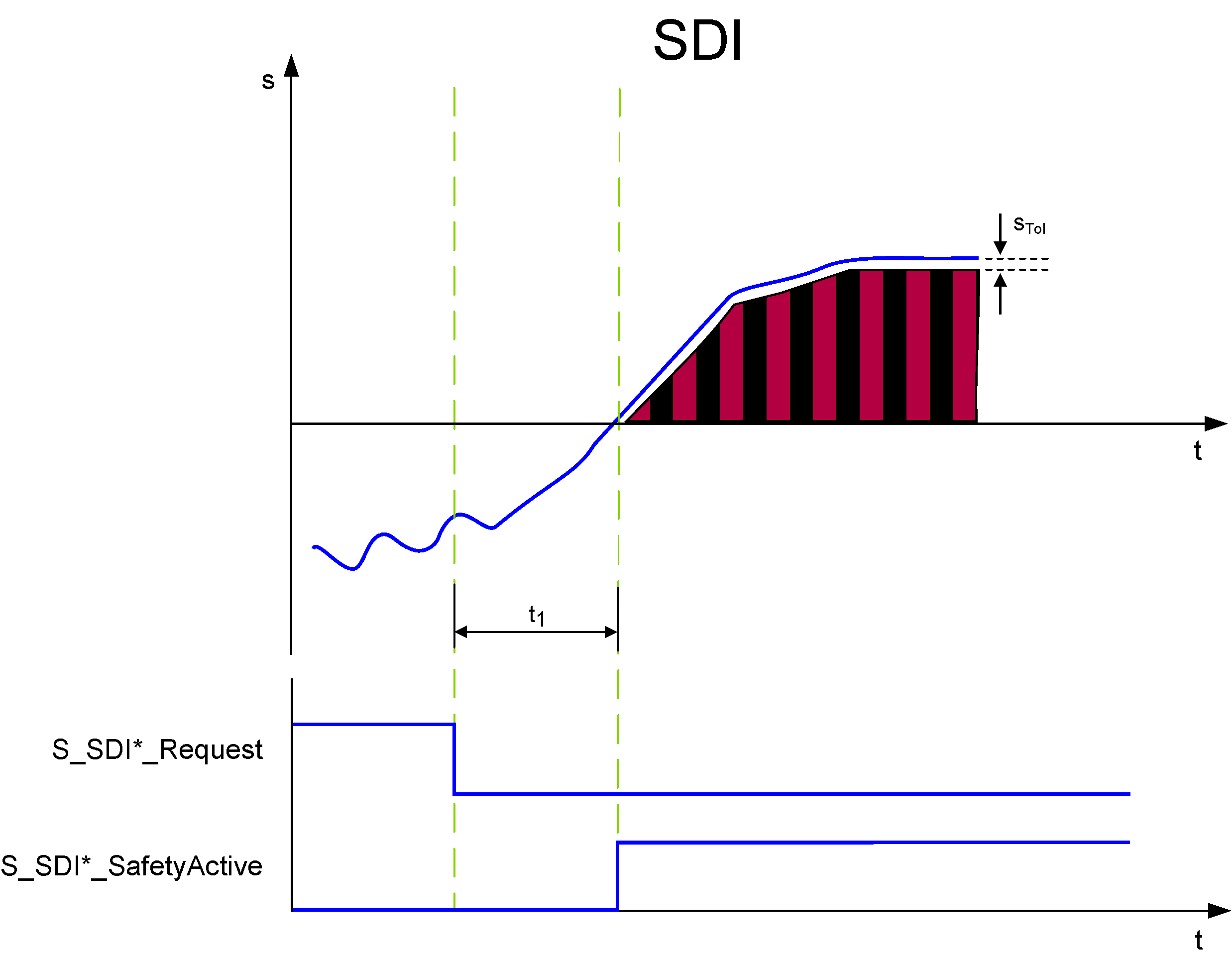SDIneg and SDIpos - Safe Direction Negative/Positive Function
General Function Description
The Safe DIrection (SDI) safety-related function ensures that rotation/movement is only possible in the permitted (parameterized) direction.
The function block distinguishes two rotation/movement directions by providing separate inputs for requesting the SDI Negative or SDI Positive monitoring function: SDIneg and SDIpos. Both SDI monitoring functions are configured using the same parameters but can be requested independently.
The SDIneg/SDIpos function helps prevent the motor from rotating more than a defined amount into the incorrect direction (device parameter SDI_PositionTolerance[sTol], see below).
Monitoring by the Safety-Related FB/Safety Logic
The request of the safety-related function occurs at the beginning of the t1 time interval (S_SDI*_Request signal in the diagram on the left). t1 is set with the device parameter SDI_StartDelayTime[t1].

Within the t1 time interval, the standard (non-safety-related) controller also receives the request from the connected process and initiates the motion control function according to the logic and drive parameterization defined in the standard (non-safety-related) application.
After t1 has elapsed, the direction is monitored by capturing the position. Moving/rotating a certain distance against the allowed direction is permitted if it does not exceed the defined position tolerance STol.
If the SDI function is executed successfully, the function block switches S_SDI*_SafetyActive = SAFETRUE (see diagram).
If the SS1 fallback function has been activated due to an error detected of the position tolerance as described below, this is indicated by S_SS1_SafetyActive = SAFETRUE.
Fallback Function
If the absolute value of the position exceeds the position tolerance (parameter SDI_PositionTolerance[sTol]) after t1 has elapsed, the SS1 function is automatically executed as the fallback function.